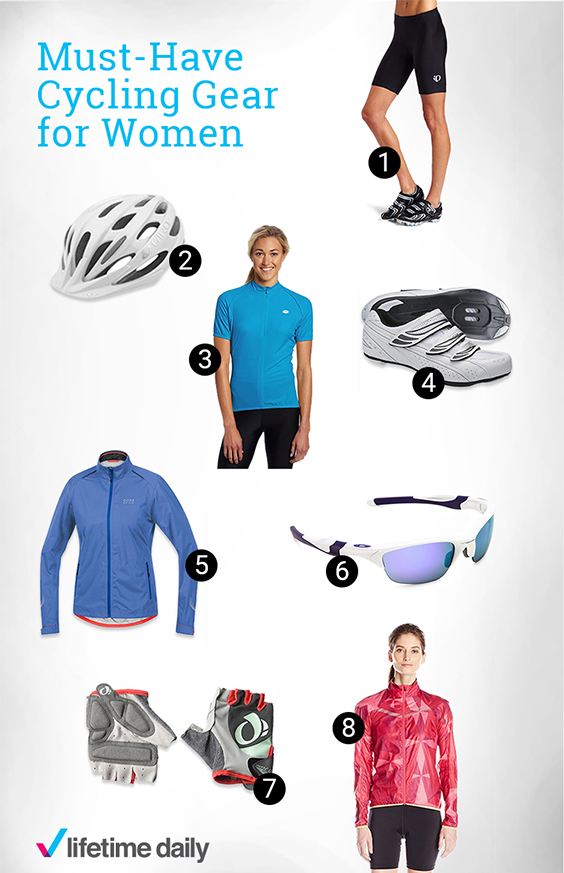
PhotoSport International

If you haven’t been on a bike since you were a kid, consider this: between 1994 and 2009 the number of bike trips made in the U.S. by adults between the ages of 60 and 79 quadrupled. That’s the fastest growth rate of any demographic. Biking for fitness is one of a few low-impact exercises that can be done outdoors. It’s also easy on joints, raises your heart rate, strengthens leg muscles and serves as a social experience. But what if you haven’t been on a bike in ages? How do you get started?
We spoke with former professional road-bike racer Alex Stieda (pictured above) who today leads clinics and cycling tours for older adults in regions around the world and asked for his advice.
In 1986, Stieda raced for the esteemed 7-Eleven cycling team where he captured five classification jerseys at the Tour de France including the yellow jersey, becoming the first North American to ever lead the Tour. Drawing on more than 40 years of cycling experience, he now helps new and experienced riders alike get the most out of their time in the saddle.
Q&A with Alex Stieda
Q: You’ve spent a great deal of your life on a bicycle. Do you ever get tired of it?
A: I never get tired of it and one of the main reasons is because I ride in different environments and that helps keep cycling fresh for me. For example, I ride on some local single track trails during the day, but I’ll also put a light on my bike and ride those same trails at night — it changes the whole experience.
Q: What motivates you to continue cycling, especially as you get older?
A: I’m 56 and finally have more time to do things for myself now that my kids are grown-up and out of the house. Cycling is also great exercise; it doesn’t beat you up as long as you learn to cycle properly. One of the beautiful things about cycling is that you can do it alone at your own speed or you can ride as part of a larger group. The latter changes the experience dramatically. A cycling tour or trip, or even just riding locally with friends is also a great social experience.
Q: What are some of cycling’s health benefits?
A: It’s a great cardio and core workout. Pedaling is a smooth action; it’s much gentler on the body than running. You also get your calves, quadriceps and hamstrings working too. So while it may not be a full-body workout, it’s pretty close. Plus you get the benefit of being outside in the fresh air. Cycling is also a great opportunity to free your mind and forget about life’s stresses. It’s a formula that’s hard to beat.
Q: What are some of the things beginner cyclists should know before jumping on a bike?
A: First, you’ll need to decide on the type of cycling you want to do. Do you want to ride a road bike? Cycle in the city? Race? Or mountain bike? Knowing what type of riding you want to do will dictate the type of bicycle you buy and how much money you need to spend.
Then go to a reputable bike shop and strike up a conversation with the shop owner, the front-line sales people, even the shop’s mechanic. They should ask you specific questions about the kind of riding you’d like to do, your level of experience and your current and future cycling goals. A strong relationship with your local bike shop will serve you well as you become a more experienced rider.
Once you buy the right bike, have it fitted. If the bike shop that you’re in doesn’t do bike fits, then turn around and walk out. A bike is not just about seat height and handlebars; frame size, gearing and handlebar type are all important. A petite woman may have narrower handlebars with a shallower drop than a taller woman or man, for example. Seats are also specific to different anatomies and body weights. Your bike shop should be able to fit a saddle specifically for you.
Q: What’s a good goal for a beginner cyclist to work toward in their first year? Should they go in races, on bike tours, to camps?
A: If you’re new to cycling, especially riding a road bike, it’s a good idea to go to a cycling camp. You’ll learn fundamental skills that’ll increase your confidence and keep you safe and free from injury. You’ll learn things like how the gears work, when to shift, how to ride in a group and how to draft properly. You’ll also better understand how your front and rear brakes work and how to corner correctly. This translates into how to go down a hill properly and how to properly climb in and out of the saddle.
As you get older, safety is paramount for preventing injury. You’ve got to be aware of where you are on the road when you’re riding with traffic. I’ve started riding with a flashing LED light on the back of my saddle. I turn it on for every ride, even during the day, so that cars and other cyclists can see me when they’re behind me.
Q: Clipless pedals. Can you talk about the benefits of using them?
A: I encourage new riders to use clipless pedals as soon as possible. It’s going to put your foot in the best position on the pedal and allow you to be as efficient as possible with your pedaling power. There are a few different clipless pedal styles available. For new riders, I recommend a mountain bike style clip and pedal system. The shoe has a recessed clip, so it’s easier to walk in the shoe when you’re off the bike. A pure road shoe has the clips sticking out of the bottom.
Q: Is it important to wear cycling-specific clothing?
A: You have to wear a helmet, no question. Your helmet should fit low, level and snug. Protective eyewear is also a good investment. And you’ll want to wear cycling shorts with a pad or a chamois. Invest in a number of cycling shorts with the same chamois so that when one pair is in the wash, you have another pair with the same contact points on the saddle.
New cyclists often complain about saddle soreness. It can take a few weeks of riding to overcome it and get used to how you sit on the saddle. That’s another reason why you want a saddle that’s fit for you; you want to put pressure on the right parts of your ‘sit’ bones. You’ll also want to have a jersey with a three-quarter length zip. This way, you can zip it down if you get too hot on a climb or zip it up when you’re going downhill. If you’re in hilly or mountainous terrain, a wind vest that you can roll up and store in the middle pocket of your jersey is also good idea. The weather can change quickly at higher altitudes; a wind vest can help keep you warm.
Cycling gloves with padding can also help minimize numbness in your hands while you ride. The other advantage is that if you fall, the gloves will protect your hands from road rash.

1. Pearl iZumi Men’s Quest Cycling Short
2. Pearl iZumi Select RD IV Cycling Shoe
3. Giro Savant Road Bike Helmet
4. Sugoi Neo Pro Jersey
5. Oakley Men’s Radar Shield Sunglasses
6. Craft Men’s Performance Bike Storm Jacket
7. Craft Men’s Escape Rain Jacket

1. Pearl iZumi Women’s Quest Shorts
2. Giro Verona Bike Helmet
3. Sugoi Women’s Neo Jersey
4. Shimano Road Cycling Shoe
5. Gore Bike Wear Women’s Rain Cycling Jacket
6. Oakley Half Jacket 2.0 Sunglasses
7. Pearl iZumi Ride Women’s Select Gloves
8. Craft Women’s Featherlight Ultra-Light Windproof Bike Jacket



